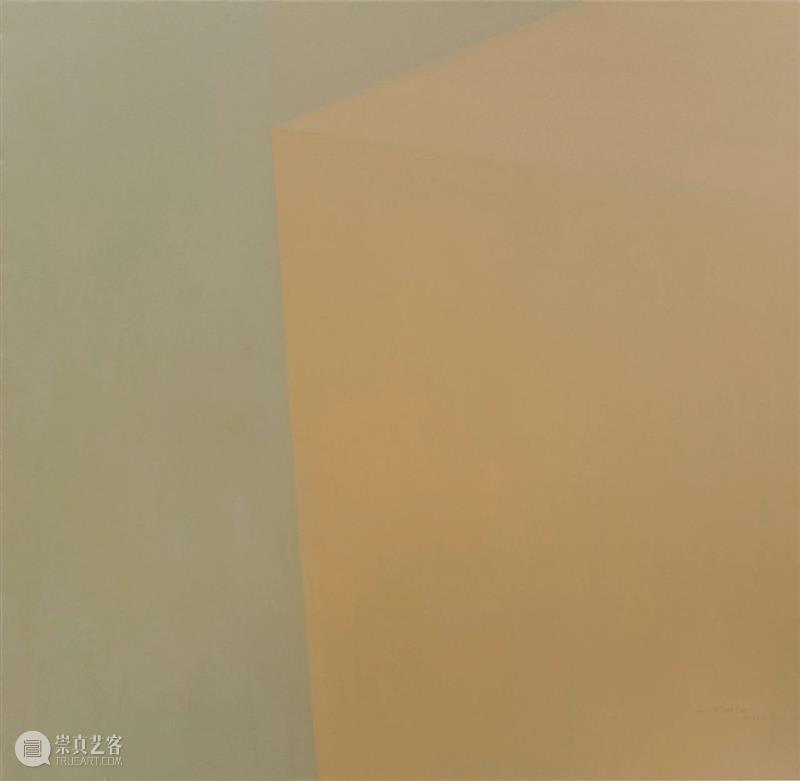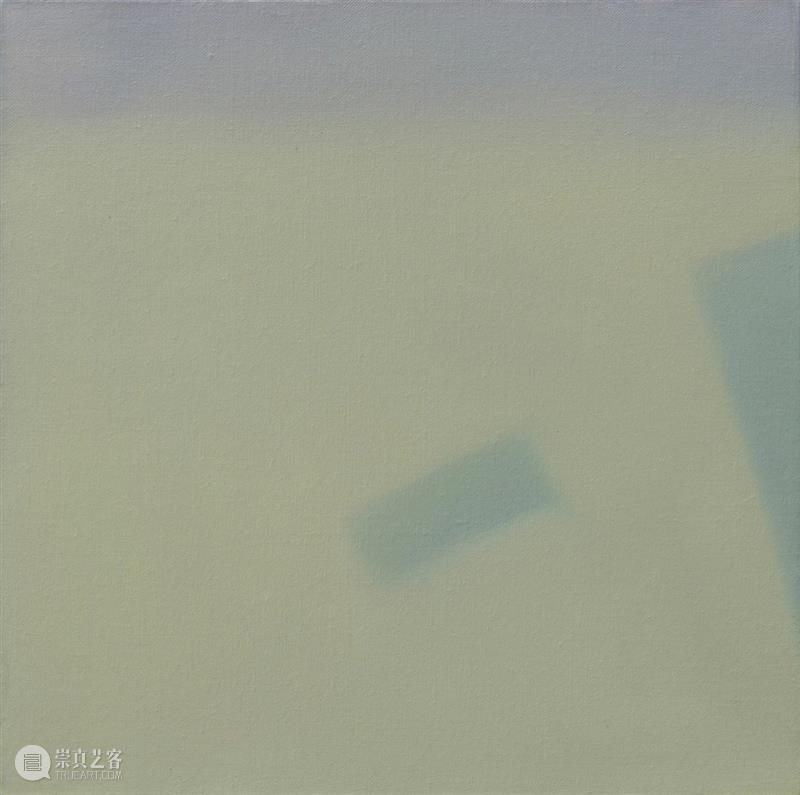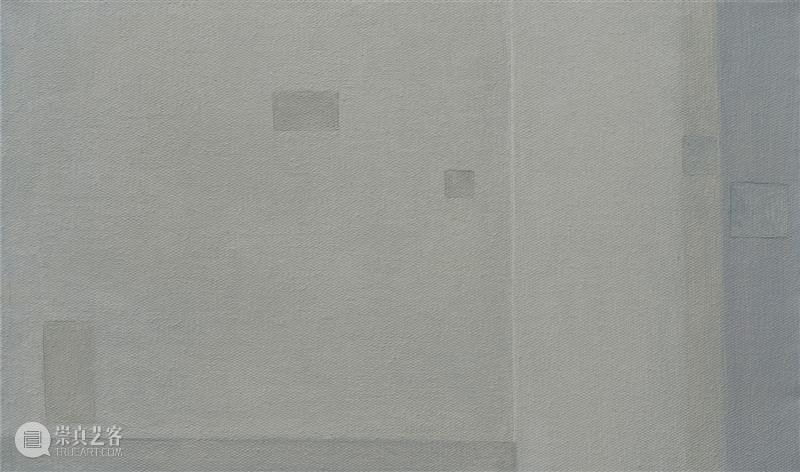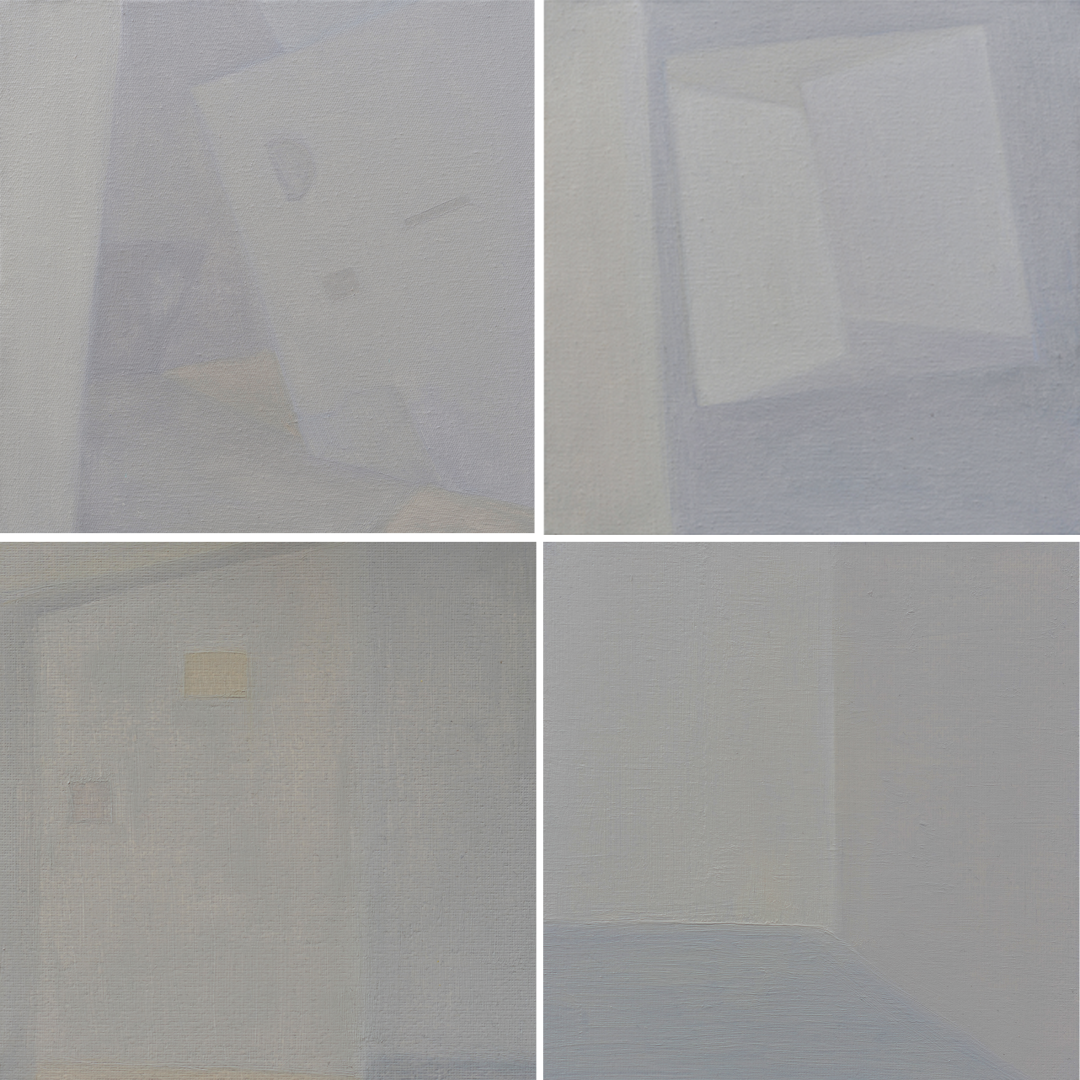收录于话题
#CYE



在哲学和语言学领域里的‘能指(signifier)’与‘所指(signified)’,它们构成语言符号的两个基本要素。能指(signifier)指的是语言符号的形式,比如单词、声音或图像;它是符号的物质层面,是我们可以感知的部分。所指(signified)则是能指所代表的概念或对象;它是符号的意义层面,是我们心中对能指的认知和理解。而在梁剑军的绘画语言里,也有他对画面构成要素‘能指’与‘所指’的定义:“我在面对现实场景时是‘在场’的,然而在创作过程中,以‘不在场’的状态对所看到的场景进行提取和创作,从而引发对现实场景与绘画场景中的对立与统一的思考。”In the field of philosophy and linguistics ‘signifier’ and ‘signified’, which constitute the two basic elements of linguistic signs. The signifier refers to the form of a linguistic sign, such as a word, sound or image; it is the material aspect of the sign, the part that we can perceive. The signified is the concept or object represented by the signifier; it is the meaning level of the signifier, the perception and understanding of the signifier in our mind. In Liang Jianjun's painting language, there are also his definitions of ‘signified’ and ‘signified’, which are the constituent elements of a picture: ‘I am “present” when I face a real scene, yet I am “present” when I create it. ‘I am “present” when facing the real scene, however, in the process of creation, I extract and create the scene I see in the state of “absence”, thus triggering thoughts on the opposition and unity between the real scene and the painting scene.’
梁剑军 《在场,不在场》系列16 135×135cm 布面油画 Liang Jianjun ‘Presence, Absence’ Series 16 135×135cm Oil on canvas 
梁剑军 《在场,不在场》系列19/25/26 15×15cm 纸本油画 Liang Jianjun ‘Presence, Absence’ Series 19/25/26 15×15cm Oil on canvas 
梁剑军 《在场,不在场》系列15 135×135cm 布面油画 Liang Jianjun ‘Presence, Absence’ Series 15 135×135cm Oil on canvas “我希望能通过作品把‘在场’的感受传递给观者,这种创作意识虽然无法使观者将作品本身的观念与现实场景相呼应,但却将观者引入一个由我营造出的画面空间。在空间里,现实场景的秩序被重新解读和塑造,触发观者自身的视觉感知,从而去接收作品传达出的创作意识,这种‘在场’十分宝贵。”
‘I hope to convey the feeling of “presence” to the viewer through my works. This sense of creation does not enable the viewer to echo the concept of the work itself with the real scene, but it introduces the viewer to a pictorial space created by me. In the space, the order of the real scene is reinterpreted and reshaped, triggering the viewer's own visual perception to receive the creative consciousness conveyed by the work, and this ‘presence’ is very valuable.’
梁剑军 《在场,不在场》系列28 100×100cm 布面油画 Liang Jianjun ‘Presence, Absence’ Series 28 100×100cm Oil on canvas 梁剑军 《在场,不在场》系列18 30×30cm 布面油画 Liang Jianjun ‘Presence, Absence’ Series 18 30×30cm Oil on canvas
他将作品中的素材与元素重新提炼和处理,利用平朴的色调和符号语言,加工凝练成为自己特有的“能指”绘画语言。但依然保持着某种可意会的“所指”,这是一种观者熟知的现实世界的朦胧意象,二者之间联系密切。
He refines and treats the materials and elements in his works, using plain colours and symbolic language to process and condense them into his own unique ‘can-indicate’ painting language. However, he still maintains a kind of ‘reference’ that can be understood, which is a kind of hazy image of the real world that the viewer is familiar with, and there is a close connection between the two.

梁剑军 《在场,不在场》系列23 150×150cm 布面油画 Liang Jianjun ‘Presence, Absence’ Series 23 150×150cm Oil on canvas 梁剑军 《在场,不在场》系列24 150×150cm 布面油画 Liang Jianjun ‘Presence, Absence’ Series 24 150×150cm Oil on canvas 在以能指所能代表的形象语言基础上,它构成了观者心理现实的基础,所指却又唤起观者心中的意义和象征,二者之间关系任意却又约定俗成。梁剑军在画中维持着二者的联系,这种联系是观者能够在抽象的画作中找到现实世界的影子,同时感知到创作者本人对于现实场景创作视角的共鸣。??On the basis of the figurative language represented by the energy reference, which forms the basis of the viewer's psychological reality, the reference evokes meanings and symbols in the viewer's mind, and the relationship between the two is arbitrary yet conventional. Liang Jianjun maintains the connection between the two in his paintings, a connection that enables the viewer to find the shadow of the real world in his abstract paintings, and at the same time perceive the resonance of the creator's own perspective on the creation of real-life scenes.
梁剑军 《在场,不在场》系列29 40×40cm 布面油画 Liang Jianjun ‘Presence, Absence’ Series 29 40×40cm Oil on canvas
梁剑军 《在场,不在场》系列35 40×40cm 布面油画 Liang Jianjun ‘Presence, Absence’ Series 35 40×40cm Oil on canvas“对于绘画语言可以从我对素材的寻找与元素的提取两个方面来说:首先素材寻找更多是在现代城市生活中,譬如,建筑的墙壁、窗子、路面、相比自然景物更规矩,不同线面的组合使我很容易就能感受到其中所具有的秩序感。”
‘For the language of painting, it can be said from the two aspects of my search for materials and extraction of elements: first of all, materials are more often found in modern city life, for example, building walls, windows, road surfaces, compared with the natural scenery is more regular, the combination of different lines and surfaces make me easily feel the sense of order in it.’梁剑军 《在场,不在场》系列21 120×200cm 布面油画 Liang Jianjun ‘Presence, Absence’ Series 21 120×200cm Oil on canvas 梁剑军 《在场,不在场》系列30 40×40cm 布面油画 Liang Jianjun ‘Presence, Absence’ Series 30 40×40cm Oil on canvas
“举例来说,当我们把几扇窗子以特殊的视角放在一个二维平面中去思考,那两个普通的景物就产生了超出物体实用属性以外的性质,我觉得这就是一种‘美感’。之后我再把从实景感受寻找到的素材进行绘画提炼,其实这个工作在我取材或拍摄的时候就已经在进行了,只是一些干扰元素无法通过拍摄直接去除,因此需要我用绘画的方式去完成。”
‘For example, when we put a couple of windows in a two-dimensional plane with a special perspective, those two ordinary objects have a nature beyond the practical properties of the objects, which I think is a kind of ‘beauty’. After that, I then refine the material that I find from the real-life feeling by painting. In fact, this work is already underway when I take the material or shoot it, only that some disturbing elements can't be directly removed by shooting, so I need to finish it by painting.’

梁剑军 《在场,不在场》系列10 30×50cm 布面油画 Liang Jianjun ‘Presence, Absence’ Series 10 30×50cm Oil on canvas 
梁剑军 《在场,不在场》系列8/7/11/12 40×40cm/15×15cm 布面油画 Liang Jianjun ‘Presence, Absence’ Series 8/7/11/12 40×40cm/15×15cm Oil on canvas 在绘画形式上,他刻意强化平面性,去除一些非必要的光影。造型上大量使用规则形状,减少非必要的细节,重点考虑色块大小、位置、形状上的变化。颜色上以平涂寻找微弱的色彩冷暖变化,避免高纯度、高明度色彩对于画面秩序感的削弱。造型上的规整和色彩上的迷糊让位,最终营造一种暗含准确秩序却又带有朦胧不确定性的画面氛围。In terms of painting form, he deliberately strengthens flatness and removes some non-essential light and shadow. In terms of modelling, he uses a large number of regular shapes, reduces non-essential details, and focuses on changes in the size, position and shape of colour blocks. In terms of colours, the artist uses flat paint to find the slightest change of warmth and coolness, and avoids the weakening of the sense of order in the picture by high purity and high brightness colours. The regularity of shape and the confusion of colour give way to create an atmosphere that implies precise order but with a hazy uncertainty.梁剑军 《在场,不在场》系列34 40×40cm 布面油画 Liang Jianjun ‘Presence, Absence’ Series 34 40×40cm Oil on canvas
Q:你觉得十年后自己的生活状态会是什么样,会继续做艺术吗?A:未来之事,无法预见。我想用心感受生活,好好享受生活,活在当下最重要。会的,肯定会一直坚持做艺术,艺术创作是我生活的一部分。
A:23年7月在上海参加第二届“当代油画·雕塑青年推介展”中油画板块的现场研讨会,这次展览是我第一次以青年艺术家的身份受邀参加线下的交流,我内心备受鼓舞。听油雕院的前辈和老师们的分享后,深深感受到了自己认知的局限,能和一同参展的青年艺术家们一起交流学习,我感觉到很快乐且幸运。这一次的交流学习,对于我个人成长上有具有非常重要的意义,很感谢上海遇见的每一位老师和朋友。
Q:你的创作过程一般是什么样的,有什么特别的体验吗?A:有一次的创作体验让我印象深刻。23年7月,我在云南丽江写生时所创作《在场,不在场》系列21(小幅纸本)。身处木质结构搭建的客栈客房,我被这里木块与木条之间错落的联系所吸引,感受自然、朴素的连接方式,与现代都市高楼不同,这些木块并未展现出强烈的规则秩序,却在大小形状和高低错落之间隐含着自然的秩序。在阴雨天气时,整个场景仿佛笼罩在一层柔和的雾气之中,雨滴如斜斜的音符轻击地面,将细长的水珠、地面、客栈的木条和屋檐融为一体。它们有序的组成一幅自然的画卷,在阴雨中散发出色彩和韵律。在这自然的秩序中,我的内心深深感受到了一种自然的美,启发了我从抽象的角度出发在自然环境中进行提取创作。 在回到学院后,我对这幅创作小稿进行放大,发现心境不同,画面的呈现色彩也不同,小稿整体色调偏冷蓝紫色,而《在场,不在场》系列21整体色调偏暖黄绿色。这幅作品的创作过程中,我所处的心境也如画面一样平静温和,与阴雨天气带来的沉闷感有所不同。平和的心境让我能够理性地回想起当时的情景,从而将那一时刻的体验提炼成作品的灵感和内容,画面最终所呈现的平和感,正是我一直希望表达的情感状态。
A:鲁道夫·阿恩海姆《艺术与视知觉》、E.H.贡布里希《秩序感:装饰艺术的心理学研究》、瓦西里·康定斯基《艺术中的精神》、H·丹纳《艺术哲学》、徐复观《中国艺术精神》。

特别喜欢的一张毕业照?
One of my favourite graduation photos.
特别喜欢的一张照片????
A particular favourite photo.
A group photo with friends out at the show.
I love the ‘big clouds’ in Yunnan!
梁剑军???
1998年出生于广东湛江
2021年07月毕业于海南师范大学美术学院绘画系,油画专业获学士学位
2021年09月至今就读于云南艺术学院美术学院,油画系油画专业
2023年 “美在致广——全国小幅美术精品展” 中国美术馆 北京;“当代雕塑·油画青年推介展” 上海油画雕塑院美术馆 上海、天津美术院美术馆 天津;“山径春行”——第一届艾维文学艺术月 艾维美术馆 昆明;第二届云南高校美术擢新展 文达画廊 昆明;“画说桂林”大型美术活动之青年艺术家作品展 桂林美术馆 桂林;作品入选“云岭彩韵”第十届云南省水彩粉画展云南美术馆 昆明/ 2022年作品入选第五届“朝圣敦煌”全国美术作品展 关山月美术馆 深圳;作品入选首届云南重彩画及综合材料艺术作品邀请展 云南美术馆 昆明
































 分享
分享